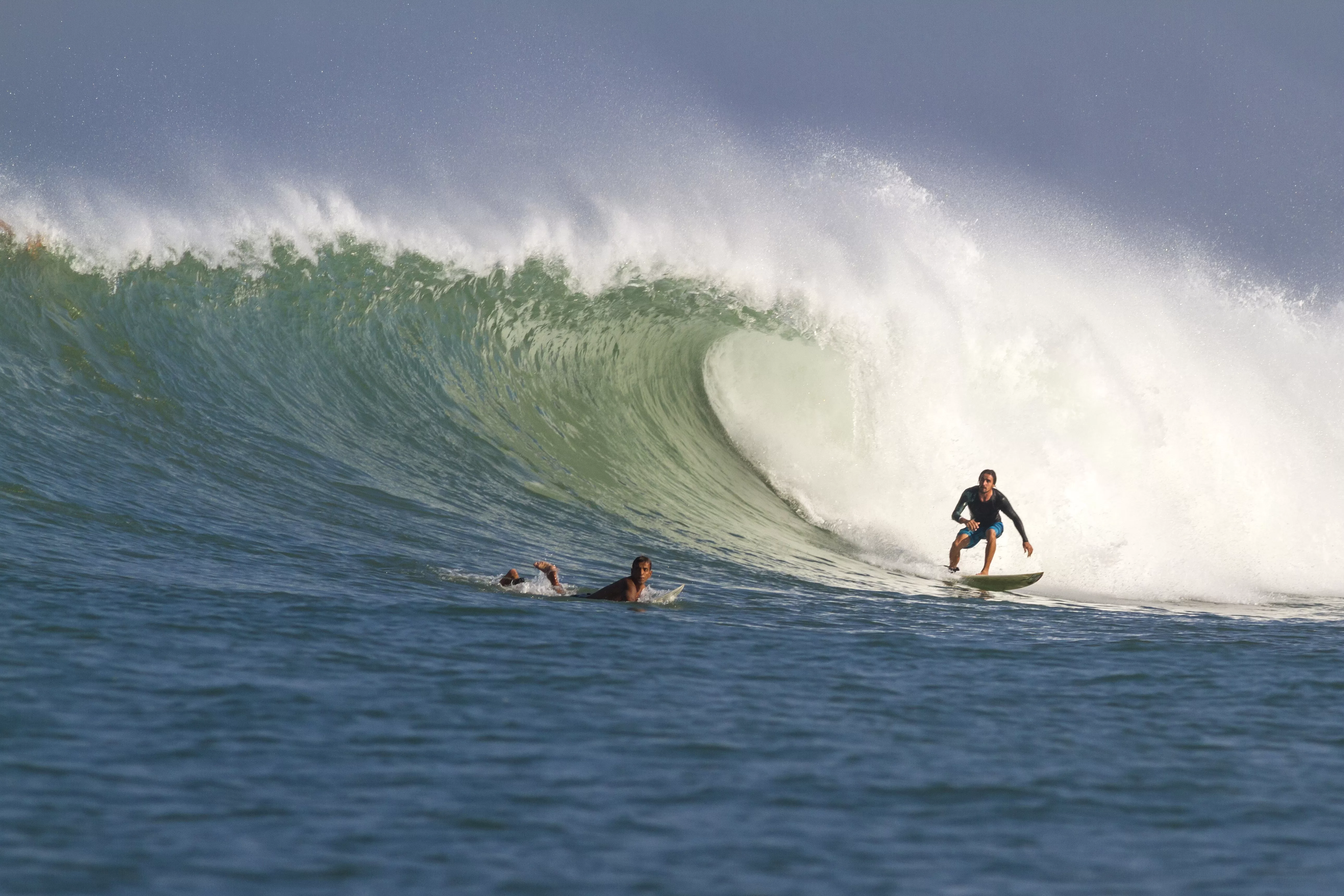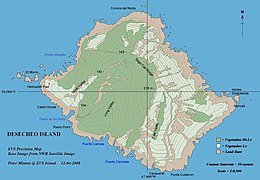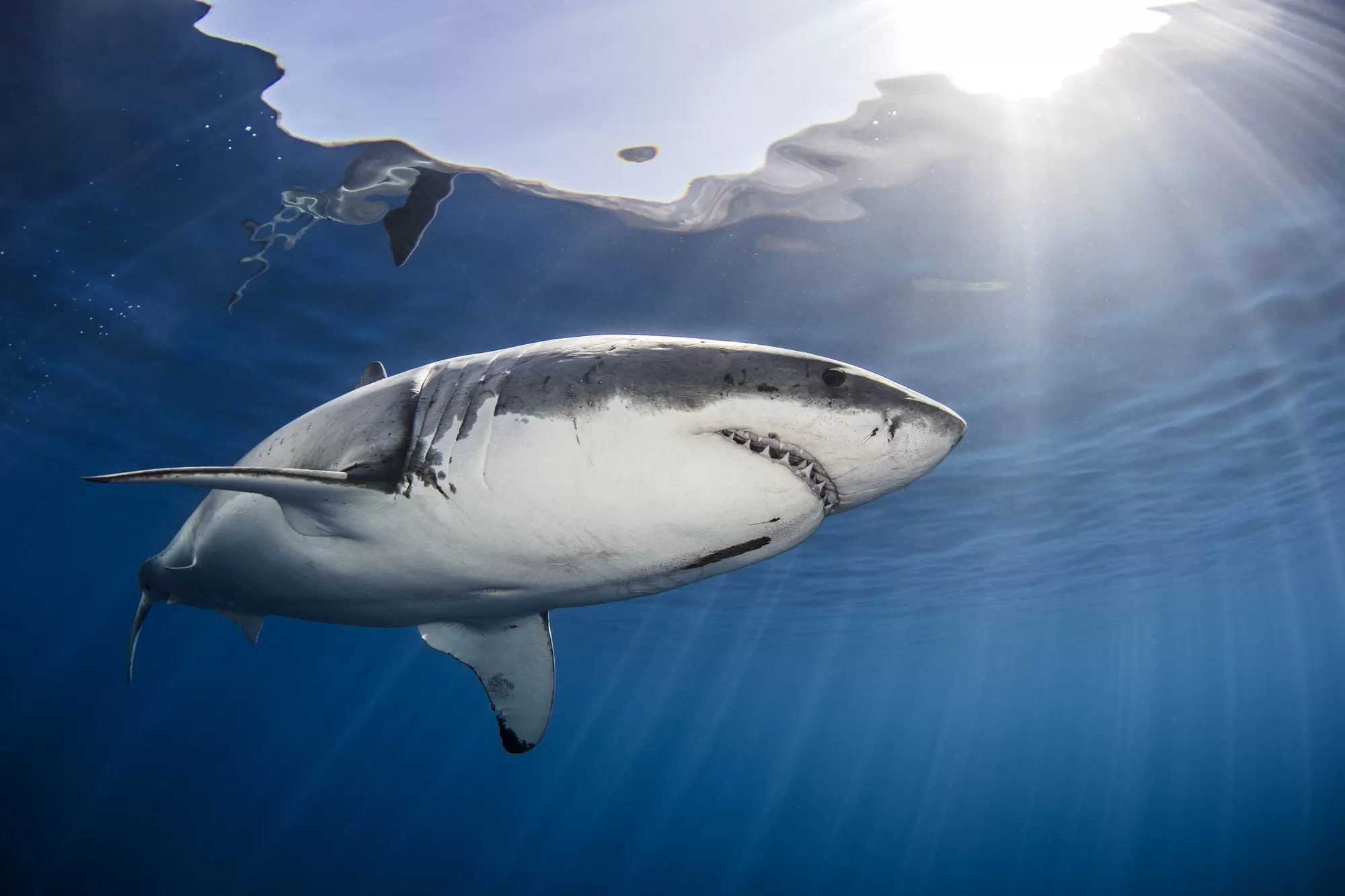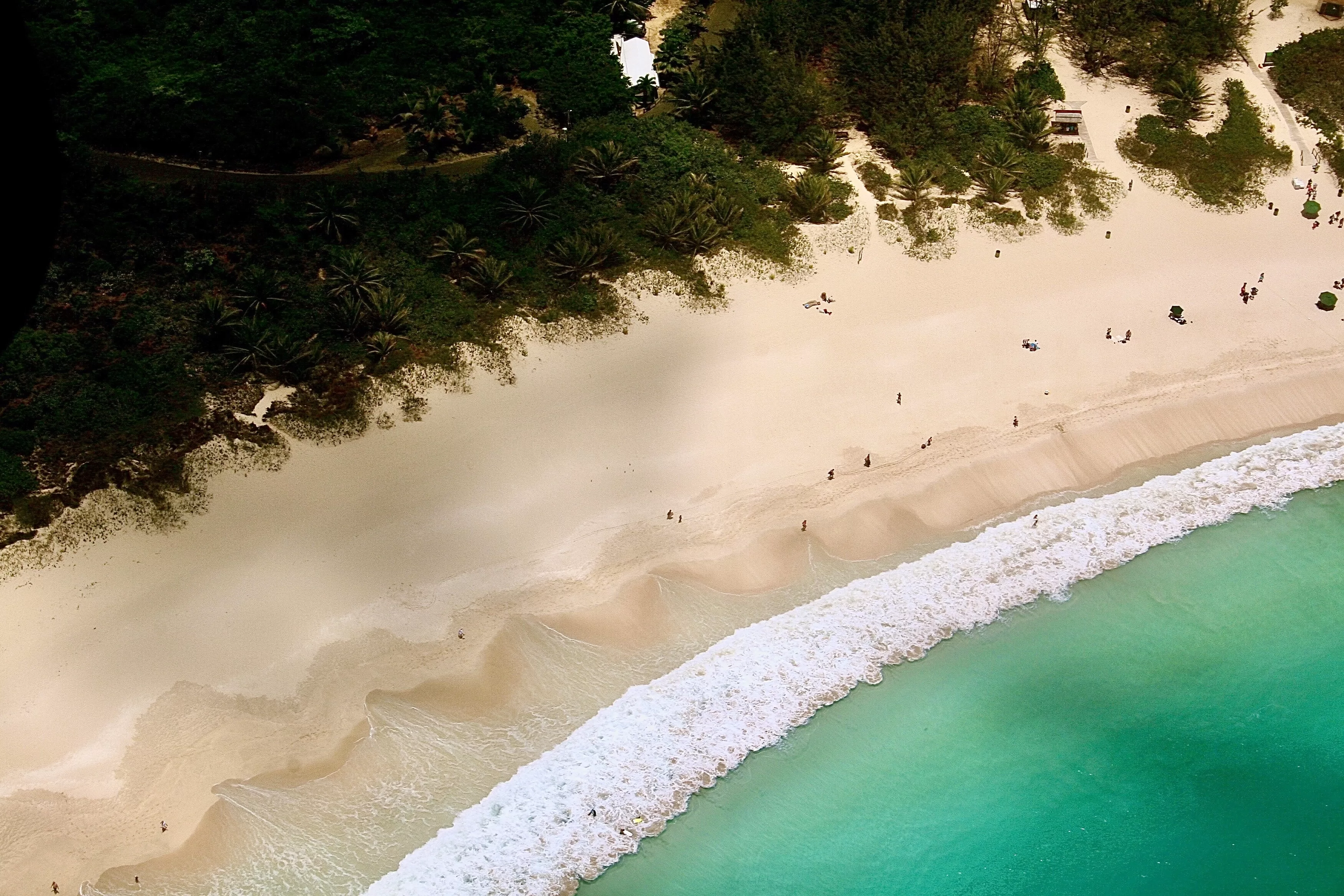Puerto Rico as a Surfing Destination
Puerto Rico, a gem in the Caribbean, is renowned globally as a premier surfing destination, attracting wave enthusiasts from around the world. The island’s allure lies in its diverse coastlines, offering a variety of surf spots that cater to different skill levels and styles. From the powerful, rolling waves of the Atlantic Ocean to the gentler, playful swells of the Caribbean Sea, Puerto Rico provides a unique surfing experience in every direction. Its geographical positioning ensures consistent surf conditions year-round, making it an ideal spot for both seasoned surfers and those looking to catch their first wave. The island’s natural beauty, with its pristine beaches and tropical landscapes, adds to the overall appeal, creating an unparalleled surfing ambiance.
Brief History of Surfing in the Region
The history of surfing in Puerto Rico is as rich and vibrant as the island itself. Surfing was introduced to Puerto Rico in the early 1960s, a period marked by the island’s burgeoning exploration of coastal sports. It quickly gained popularity, evolving from a niche hobby to a significant aspect of the island’s culture. Historical figures such as the renowned surfer Nat Young, who visited in 1968 and won the World Surfing Championship, helped put Puerto Rico on the global surfing map. The famous “Rincón Surf Classic,” first held in the 1960s, further cemented Puerto Rico’s status as a surfing haven. Over the years, the island has produced a number of notable surfers who have competed on the world stage, continuing to enrich and expand the local surfing legacy. This rich history contributes to the deep-rooted surfing culture in Puerto Rico, making it a destination with not just great waves, but a profound heritage in the sport.
Different Types of Surfing Spots in Puerto Rico
Beach Breaks
Beach breaks in surfing refer to spots where waves break over sandy seabeds. These breaks are particularly favored for their generally softer and more forgiving waves, making them ideal for beginners. In Puerto Rico, beach breaks can vary from gentle rollers perfect for longboarding to more powerful waves suited for shortboarding. Notable beach break spots include the popular Jobos Beach, known for its accessible waves suitable for all levels, and Sandy Beach in Rincón, offering a more laid-back surfing experience with its mellow waves and scenic beauty. These spots not only provide excellent surfing conditions but also embody the vibrant beach culture of Puerto Rico.
Reef Breaks
Contrasting beach breaks, reef breaks occur over coral or rocky seabeds. These spots are characterized by their consistent and often more challenging waves, attracting intermediate to advanced surfers. The clear, warm waters of Puerto Rico host some remarkable reef breaks like Tres Palmas, famed for its big wave surfing during the winter months. Another iconic spot is Domes Beach, offering consistent right-hand waves that make it a favorite among more experienced surfers. The allure of reef breaks lies in their predictability and the exhilarating ride they offer, though they demand respect for their often sharp and unforgiving bottom.
Point Breaks
Point breaks are where waves hit a point of land or rocks, peeling along the coast for a considerable distance. This type of break is cherished for offering long, smooth rides, making them a favorite for surfers looking to hone their skills on long, drawn-out waves. In Puerto Rico, Maria’s Beach is a classic example of a point break, providing long right-hand waves that are a delight for both intermediate and experienced surfers. Another notable point break is La Ocho in San Juan, known for its accessible location and waves that offer a mix of challenges for various skill levels.
Suitability for Different Skill Levels
Each type of surf break in Puerto Rico caters to different skill levels. Beach breaks, with their softer waves, are typically more suitable for beginners and those looking to improve their basic skills. Intermediate surfers often gravitate towards reef breaks, where more consistent and challenging waves help refine their techniques. Advanced surfers might seek the thrill of larger waves at certain reef breaks or enjoy the long rides of point breaks. Understanding one’s skill level and the nature of these breaks is crucial for a safe and enjoyable surfing experience in Puerto Rico.
Top Surfing Locations in Puerto Rico
Puerto Rico’s coastline is dotted with a multitude of surf spots, each boasting its own character and charm. Here’s an in-depth look at some of the top surfing locations on the island.
Rincón
Often referred to as the “Surfing Capital of the Caribbean,” Rincón is a haven for surfers. The town hosts numerous renowned spots, like Domes Beach, known for its consistent waves and the iconic decommissioned dome-shaped nuclear reactor near the shore. Maria’s Beach is another gem, offering long right-hand waves, especially appealing during the winter swell. The area around Rincón is not only about spectacular waves but also about a vibrant surfing community, making it a complete surfing destination.
Isla Verde
Located near the capital city of San Juan, Isla Verde is perfect for those who want to combine urban amenities with quality surfing. The beach break here is ideal for beginners and intermediate surfers, offering a mix of small to medium waves. The accessibility and proximity to the city make it a popular spot for both locals and tourists.
Aguadilla
Home to Crash Boat Beach, Aguadilla is another top surfing location. This spot is known for its clear waters and a mix of wave types, suitable for various skill levels. The old pier remnants add a unique backdrop to the surfing experience here. Surfers can also explore nearby spots like Wilderness and Gas Chambers, known for their powerful waves and less crowded conditions.
Loíza
Loíza’s Aviones Beach is a hidden gem for surfers seeking a more local experience. Known for its powerful and fast waves, it’s a spot more suited for experienced surfers. The beach is also famous for its beautiful natural scenery and vibrant local culture, offering a truly authentic Puerto Rican surfing experience.
What Makes Each Location Unique
Each of these locations in Puerto Rico carries its own unique appeal. Rincón, with its numerous spots and surf culture, is a complete surf town, while Isla Verde offers the convenience of city life alongside surfing. Aguadilla stands out for its variety of waves and scenic beauty, and Loíza’s Aviones Beach offers a more local and raw surfing experience. These diverse locations not only provide different surfing challenges but also give a glimpse into the varied coastal landscapes and cultures of Puerto Rico.
Seasonal Surfing Guide in Puerto Rico
Best Times of Year for Surfing
Surfing in Puerto Rico peaks at different times of the year, largely influenced by seasonal changes in weather and wave conditions. The prime surfing season in Puerto Rico is during the winter months, from November to February, when the north swell brings in large and consistent waves, ideal for experienced surfers. This period sees spots like Rincón and Aguadilla come alive with world-class surf. For beginners or those preferring gentler waves, the summer months, from June to August, offer smaller and more manageable swells, particularly in areas like Isla Verde. It’s also worth noting that the winter months coincide with the tourist high season, so while the waves are at their best, the beaches and surf spots can be more crowded. In contrast, the summer provides a more laid-back surfing experience with fewer crowds.
Seasonal Weather Conditions and Wave Patterns
Puerto Rico’s tropical climate plays a significant role in shaping the surfing conditions throughout the year. The winter months are characterized by stronger winds and larger swells from the north, creating the perfect conditions for advanced surfing, especially on the island’s northwest coast. During the summer, the island experiences calmer seas and smaller waves, making it an ideal time for beginners to learn and enjoy surfing. Additionally, the summer months occasionally bring tropical storms or hurricanes, which can lead to sudden changes in wave conditions, emphasizing the need for surfers to stay informed about the weather. The shoulder seasons, spring (March to May) and fall (September to November), often offer a balance with moderate wave sizes and more comfortable weather conditions, suitable for a wide range of surfing abilities.
Surfing Culture and Community in Puerto Rico
Local Surfing Culture In Puerto Rico, surfing is more than a sport; it’s a way of life that binds the community. The island’s surf culture is a vibrant blend of passion for the waves, respect for nature, and a laid-back lifestyle. This culture is especially palpable in towns like Rincón, where local and visiting surfers alike share the waves and embrace the spirit of camaraderie. Surfing competitions, from local grassroots events to international championships, are frequent and serve as a testament to the island’s rich surfing heritage. Beyond the surf, the community gathers in local surf shops, beachfront cafes, and annual festivals, celebrating their shared love for the ocean and the surfing lifestyle.
Surf Schools and Communities Surf schools in Puerto Rico play a pivotal role in nurturing the surf community. They are not just centers for learning and improving surfing skills but also hubs for cultural exchange and community building. Schools like the Rincón Surf School and the San Juan Surf School offer lessons that cater to all ages and skill levels, promoting the sport among locals and tourists. These schools often organize beach clean-ups and community events, fostering a sense of responsibility and belonging among surfers. Through these initiatives, surf schools in Puerto Rico help sustain the vibrant surf culture and ensure its continuation for future generations.
Safety and Conservation Practices
Safety Tips for Surfers Safety is paramount when surfing in Puerto Rico. Surfers should always be aware of the local wave conditions and weather forecasts. It’s crucial to surf within one’s ability level, especially in areas known for powerful waves and strong currents. Using a leash is a must to prevent losing your board, and surfing with a buddy is always recommended for added safety. Beginners are encouraged to take lessons from certified instructors and to start at beaches known for gentler waves. Lastly, being respectful of local surfers and understanding surfing etiquette can prevent accidents and ensure a harmonious experience for everyone in the water.
Environmental Awareness and Conservation Efforts The surfing community in Puerto Rico is deeply connected to environmental conservation. Surfers are often the first to advocate for the protection of the island’s beaches and marine life. Initiatives like beach clean-ups and campaigns against coastal development are common. Many local surfers participate in coral reef preservation projects and educate others about the importance of maintaining healthy ocean ecosystems. Surfers also play a role in promoting sustainable tourism, which not only preserves the natural beauty of Puerto Rico’s beaches but also ensures the longevity of its surfing spots. By engaging in these efforts, the surfing community in Puerto Rico actively contributes to the preservation of the environment that forms the heart of their sport.
Riding the Wave Forward: Next Steps in Your Surfing Adventure
In this guide, we’ve journeyed through the vibrant world of surfing in Puerto Rico, exploring its diverse surf spots, rich local culture, and the important aspects of safety and conservation. From the adrenaline-filled waves of Rincón to the nurturing surf schools and communities, Puerto Rico offers a unique and immersive surfing experience.
We invite you to delve deeper into this enchanting world by exploring our upcoming subtopics. Discover more about the local surf legends, hidden surfing gems, and the impact of surfing on the island’s culture and environment. Join us in uncovering the deeper waves of Puerto Rico’s surfing story.




